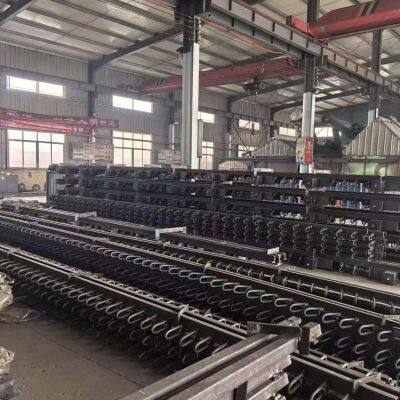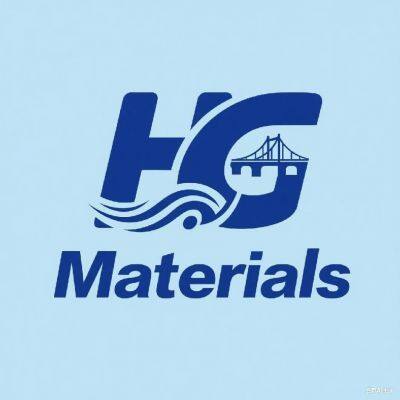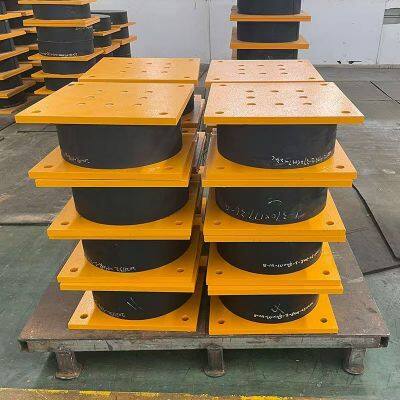Home > Products > Road bridge material supply > Laminated Natural Rubber Bridge Bearing Lead Core Bearing Seismic Isolation
Laminated Natural Rubber Bridge Bearing Lead Core Bearing Seismic Isolation
10 - 99 Pieces
≥100 Pieces
- Tianjin/QIngdao
- T/T L/C PayPal D/P Western Union Other
- 15 days
You May Like
-
HG001 High Quality Rubber Pvc Water-stop Construction Concrete Joints Waterstops Rubber Water Stop
-
HG002manufacturer Specializes in Producing Custom-made Copper-inlaid Cast Iron Gates And Cast Iron Round Gates
-
HG003 Customized Municipal Sewer Pipe Repair Pipe Blockage Diameter 800 Rubber Airbag Rubber Pipe Sealing Airbag
-
HG004 Elastomeric Laminated Neoprene Rubber Bridge Bearing Pad Nature Rubber Elastomeric Bearing Pad
-
HG005 Water Filled Inflatable Seamless Rubber Dam for Hydropower Farmland Irrigation, River Landscape, Interception of Water Flow
-
HG006 Hydraulic Elevator Dam Store Water Irrigate Landscape Flood Control Sluice Dam Gate
Product Details
| Material | EPDM | Color | Black Rubber Sheet | |
| Feature | Wear-Resistant, Impact-resistant | Usage | Other, Bridge rubber bearing | |
| Performance | Round Buckle Antiskid Rubber Sheet | Medium | Metal Frame Layer Rubber Sheet | |
| Transport Package | Wooden crate packaging | Specification | Customized according to the blueprints | |
| Trademark | Haogu | Origin | Hebei |
Product Description
Bridge rubber support; pot support; shock absorbing support
An In-Depth Introduction to Rubber Bearings and Pot Bearings for Bridge Engineering1. Introduction
In bridge engineering, bearings serve as critical components that connect the superstructure (e.g., bridge girders) and substructure (e.g., piers and abutments). Their core functions include transmitting vertical and horizontal loads from the superstructure to the substructure, accommodating structural displacements (caused by temperature variations, concrete shrinkage and creep, or live loads), and allowing rotational movements of the superstructure. Among the various types of bridge bearings, rubber bearings and pot bearings are widely used due to their distinct advantages in different application scenarios. This article provides a detailed overview of the two bearing types, covering their composition, working principles, classifications, performance characteristics, and practical applications.
2. Rubber Bearings2.1 Definition and Composition
Rubber bearings are flexible bearing components primarily made of elastomeric materials (natural rubber or synthetic rubber) and internal reinforcing steel plates. The elastomeric material is selected for its excellent elasticity, which enables the bearing to deform under load and recover its original shape after unloading. The reinforcing steel plates, usually thin and corrosion-resistant, are embedded in the rubber layers at regular intervals. Their key role is to enhance the vertical compressive strength of the bearing, prevent excessive vertical deformation of the rubber, and ensure the bearing maintains structural integrity under long-term load. Additionally, some rubber bearings may include auxiliary components such as protective covers (to shield the rubber from ultraviolet radiation, ozone, and debris) or anti-slip layers (to improve the connection between the bearing and the superstructure/substructure).
2.2 Working Principle
The working mechanism of rubber bearings relies on the unique mechanical properties of the elastomeric material and the reinforcing steel plates. When the bridge is subjected to vertical loads (e.g., dead load of the superstructure, live load of vehicles), the rubber layers compress elastically to transfer the loads to the substructure. The reinforcing steel plates restrict the lateral expansion of the rubber, ensuring that the bearing can withstand high vertical pressures without excessive deformation. For horizontal displacements (caused by temperature changes, for example), the rubber’s flexibility allows it to undergo shear deformation, thereby accommodating the horizontal movement of the superstructure without generating excessive horizontal forces on the substructure. Meanwhile, the rubber’s ability to deform in multiple directions enables it to adapt to rotational movements of the bridge girders, which occur due to uneven load distribution or structural deflection.
2.3 Types of Rubber Bearings
Rubber bearings can be classified into several main types based on their structure and functional design:
· Laminated Rubber Bearings (LRBs): Also known as multi-layer rubber bearings, LRBs consist of alternating layers of rubber and steel plates. They are the most common type of rubber bearing and are suitable for most medium and small-span bridges. LRBs can be further divided into fixed laminated rubber bearings (which only allow rotational movement and restrict horizontal displacement) and movable laminated rubber bearings (which allow both rotational movement and limited horizontal displacement).
· Lead-Rubber Bearings (LRBs): These bearings integrate a lead core into the center of the laminated rubber structure. The lead core acts as a damping element: during normal operation, it provides additional stiffness to the bearing; during seismic events, the lead core yields plastically to absorb seismic energy, reducing the transmission of seismic forces to the bridge structure. Lead-rubber bearings are widely used in seismic-prone areas.
· High-Damping Rubber Bearings (HDRBs): HDRBs use a special high-damping elastomeric material (instead of a lead core) to achieve vibration reduction. The high-damping rubber has a higher internal friction coefficient, which dissipates energy through internal friction during structural vibrations. This type of bearing is suitable for bridges that require good seismic performance without the use of lead (e.g., environmentally sensitive areas).
2.4 Performance Characteristics and Applications2.4.1 Performance Characteristics
· Good Shock Absorption: The elastomeric material of rubber bearings has excellent energy absorption capacity, which can reduce the impact of dynamic loads (such as vehicle vibrations and seismic waves) on the bridge structure, minimizing structural noise and improving ride comfort.
· Low Cost and Easy Installation: Compared with pot bearings, rubber bearings have a simpler structure, lower manufacturing costs, and easier on-site installation. They do not require high-precision machining or complex assembly processes, making them suitable for projects with tight budgets or short construction periods.
· Strong Adaptability: Rubber bearings can adapt to small deviations in the installation position of the superstructure and substructure, and their flexibility allows them to accommodate irregular rotational movements of the bridge girders.
· Limitations: Rubber bearings have relatively low vertical load-bearing capacity (generally up to several hundred tons) and limited horizontal displacement capacity (usually less than 100 mm). Additionally, the rubber material is prone to aging under long-term exposure to ultraviolet radiation, ozone, and high temperatures, which may reduce the bearing’s service life (typically 20–30 years if not protected).
2.4.2 Applications
Rubber bearings are primarily used in medium and small-span bridges, such as:
· Highway and railway bridges with spans less than 50 meters;
· Urban overpasses and pedestrian bridges, where shock absorption and low noise are important requirements;
· Bridges in seismic-prone areas (using lead-rubber bearings or high-damping rubber bearings) to improve seismic performance;
· Industrial bridges and municipal bridges with moderate load requirements.
3. Pot Bearings
3.1 Definition and Composition
Pot bearings are rigid-flexible composite bearings designed for large-span bridges and heavy-load applications. Their structure consists of several key components:
· Upper Bearing Plate: A steel plate connected to the bridge superstructure, which transmits the load from the superstructure to the lower components and accommodates horizontal displacement through sliding.
· Lower Bearing Plate: A steel plate fixed to the substructure (pier or abutment), providing a stable base for the entire bearing.
· Pot Ring: A cylindrical steel component (usually made of cast steel or forged steel) that forms a closed "pot" shape with the lower bearing plate. The pot ring restricts the lateral movement of the rubber pad and enhances the bearing’s load-bearing capacity.
· Rubber Pad: A cylindrical elastomeric component placed inside the pot ring. It is made of high-quality synthetic rubber (e.g., chloroprene rubber or ethylene-propylene-diene monomer rubber) with high compressive strength and aging resistance.
· Sealing Element: A rubber or metal seal installed between the pot ring and the upper bearing plate to prevent dust, rainwater, and other impurities from entering the pot, which could cause corrosion of the steel components or aging of the rubber pad.
· Sliding Pair: Composed of a polytetrafluoroethylene (PTFE) plate (attached to the bottom of the upper bearing plate) and a stainless steel plate (attached to the top of the rubber pad). The PTFE-stainless steel sliding pair has a very low friction coefficient (typically 0.01–0.03), enabling smooth horizontal displacement of the upper bearing plate.
3.2 Working Principle
The working principle of pot bearings combines the elasticity of the rubber pad and the rigidity of the steel components. When the bridge is subjected to vertical loads, the rubber pad inside the pot ring is compressed elastically. The pot ring restricts the lateral expansion of the rubber pad (due to the Poisson effect), converting the rubber’s compressive deformation into a more uniform stress distribution. This constraint significantly improves the vertical load-bearing capacity of the bearing—far higher than that of rubber bearings. For horizontal displacements, the upper bearing plate slides along the PTFE-stainless steel sliding pair. The low friction coefficient of the sliding pair ensures that the horizontal displacement is smooth and requires minimal force, avoiding excessive horizontal forces on the substructure. For rotational movements of the superstructure, the rubber pad deforms locally to adapt to the rotation angle, ensuring that the load is transmitted evenly to the substructure.
3.3 Types of Pot Bearings
Pot bearings are classified based on their ability to accommodate horizontal displacement:
· Fixed Pot Bearings: These bearings do not allow horizontal displacement. They are designed with a locking mechanism (e.g., dowels or limit blocks) that restricts the movement of the upper bearing plate relative to the lower bearing plate. Fixed pot bearings only allow rotational movement of the superstructure and are typically used at the fixed ends of continuous bridges or at abutments where horizontal displacement is not required.
· Unidirectional Movable Pot Bearings: These bearings allow horizontal displacement in one direction (usually along the longitudinal axis of the bridge) and restrict displacement in the transverse direction. They are equipped with guide blocks on both sides of the upper bearing plate, which limit transverse movement while enabling longitudinal sliding. Unidirectional movable pot bearings are commonly used in continuous bridges or cable-stayed bridges where displacement is mainly along the longitudinal direction.
· Bidirectional Movable Pot Bearings: These bearings allow horizontal displacement in both longitudinal and transverse directions. They do not have guide blocks, and the upper bearing plate can slide freely on the PTFE-stainless steel sliding pair in any horizontal direction. Bidirectional movable pot bearings are suitable for large-span bridges with complex displacement requirements, such as suspension bridges or arch bridges, where the superstructure may experience displacement in multiple directions.
3.4 Performance Characteristics and Applications
3.4.1 Performance Characteristics
· High Load-Bearing Capacity: Due to the constraint of the pot ring on the rubber pad, pot bearings can withstand very high vertical loads—up to several thousand tons. This makes them suitable for large-span bridges with heavy superstructures (e.g., steel box girders or concrete rigid frames).
· Large Horizontal Displacement Capacity: The PTFE-stainless steel sliding pair enables pot bearings to accommodate large horizontal displacements (up to 500 mm or more), which is essential for large-span bridges that experience significant displacement due to temperature changes or seismic events.
· Good Stability and Long Service Life: The rigid steel components (pot ring, upper and lower bearing plates) provide high structural stability, and the sealed design protects the internal rubber pad and sliding pair from environmental damage. With proper maintenance, pot bearings can have a service life of 40–60 years, much longer than that of rubber bearings.
· Limitations: Pot bearings have higher manufacturing and installation costs. The installation requires high precision (e.g., levelness of the bearing plates, alignment of the sliding pair) to ensure smooth operation. Additionally, their shock absorption performance is relatively poor compared to rubber bearings, so additional damping devices may be required in seismic-prone areas.
3.4.2 Applications
Pot bearings are mainly used in large-span and heavy-load bridges, such as:
· Long-span cable-stayed bridges and suspension bridges (e.g., bridges with spans exceeding 100 meters), where high load-bearing capacity and large displacement capacity are required;
· High-speed railway bridges, which have strict requirements on structural stability and displacement control to ensure the safety and comfort of train operation;
· Heavy-duty industrial bridges (e.g., bridges for transporting coal or ore), which need to withstand large static and dynamic loads;
· Large-span continuous rigid frame bridges and arch bridges, where the superstructure has complex displacement and load characteristics.
4. Comparison Between Rubber Bearings and Pot Bearings
To better understand the selection criteria for rubber bearings and pot bearings, the following table summarizes their key differences:
Characteristic | Rubber Bearings | Pot Bearings |
Vertical Load-Bearing Capacity | Low to moderate (up to ~500 tons) | High to very high (up to ~5000 tons) |
Horizontal Displacement Capacity | Limited (usually<100 mm) | Large (up to ~500 mm or more) |
Shock Absorption Performance | Excellent (good for reducing vibration and noise) | Poor (may require additional damping devices) |
Cost | Low (simple structure, low manufacturing cost) | High (complex structure, high-precision machining) |
Installation Requirement | Low (tolerates small installation deviations) | High (requires strict precision in alignment and levelness) |
Service Life | Short (20–30 years, prone to rubber aging) | Long (40–60 years, sealed design for protection) |
Suitable Bridge Type | Medium and small-span bridges (spans<50 m) | Large-span and heavy-load bridges (spans >100 m) |
5. Design and Maintenance Considerations5.1 Design Considerations
When selecting and designing rubber bearings or pot bearings, the following factors should be considered:
· Bridge Loads: Calculate the vertical load (dead load + live load), horizontal load (wind load + seismic load), and rotational requirements of the bridge to determine the required load-bearing capacity and displacement range of the bearing.
· Environmental Conditions: In areas with strong ultraviolet radiation or high temperatures, select rubber materials with good aging resistance (e.g., EPDM rubber) for rubber bearings; in coastal areas with high salinity, use corrosion-resistant steel (e.g., stainless steel) for the components of pot bearings.
· Seismic Requirements: In seismic-prone areas, rubber bearings should be replaced with lead-rubber bearings or high-damping rubber bearings; for pot bearings, additional seismic isolation devices (e.g., viscous dampers) can be installed to improve seismic performance.
· Displacement Requirements: For bridges with large temperature variations (e.g., bridges in cold or hot regions), select pot bearings with large displacement capacity; for small-span bridges with minimal displacement, rubber bearings are more cost-effective.
5.2 Maintenance Considerations
Proper maintenance is essential to ensure the long-term performance of bridge bearings:
· Rubber Bearings:
· Regularly inspect the rubber surface for cracks, bulges, or aging (e.g., hardening or discoloration). If damage is found, replace the bearing immediately.
· Check the protective cover for damage and repair or replace it to prevent the rubber from being exposed to the environment.
· Monitor the bearing’s position for offset or voids (between the bearing and the superstructure/substructure) and adjust or reposition the bearing if necessary.
· Pot Bearings:
· Regularly inspect the sealing element for leaks or damage. Replace the seal if rainwater or debris is found inside the pot.
· Clean the PTFE-stainless steel sliding pair and apply silicone grease to reduce friction and prevent wear.
· Check the steel components for corrosion or deformation. Use anti-corrosion paint to repair corroded areas.
· Monitor the sliding movement of the upper bearing plate to ensure it slides smoothly without jamming.
6. Conclusion
Rubber bearings and pot bearings are two essential types of bridge bearings, each with unique advantages and application scenarios. Rubber bearings are ideal for medium and small-span bridges due to their good shock absorption, low cost, and easy installation. Pot bearings, on the other hand, are suitable for large-span and heavy-load bridges, thanks to their high load-bearing capacity, large displacement range, and long service life. When selecting a bearing type, engineers must consider factors such as bridge span, load requirements, displacement needs, environmental conditions, and cost. Additionally, regular maintenance is crucial to ensure the bearings operate safely and reliably, thereby extending the service life of the entire bridge structure.
Company Profile

Hengshui Haogu Engineering Materials Co., Ltd. is located at No. 10 Longzhaiyang Road, Longxing West Street, Qinglan Township, Jing County, Hengshui City, Hebei Province. It is a company mainly engaged in the rubber and plastic products industry; the company primarily manufactures: bridge rubber bearings, rubber waterstops, rubber water stop strips, river water blocking rubber dams, hydraulic elevator dams, cast iron sluice gates, and other hydraulic and highway products.
Contact Us

- Hengshui Haogu Engineering Materials Co., Ltd.
- Contact nameWendy Chat Now
- AddressNo. 10 Longchaoyang Road, Longxing West Street, Qinglan Township, Jing County,, Hengshui, Hebei
Product Categories
New Products
-
HG005 Integral Seamless EPDM Rubber Dam for Combined Water-Air Inflation | River Retention, Landscape, Irrigation & Hydropower
-
HG001 Factory Direct Supply of Rubber Products for Construction Factories And Tunnels, With Embedded Multi-specification Steel-edged Waterstops
-
HG001 Factory Direct Sale of Rubber Waterstops for Hydraulic Construction Projects 651 Embedded Rubber Waterstops
-
HG001 Rubber Waterstop With Embedded Steel Edge for Subway Tunnel, Water-expanding Rubber Waterstop Manufacturer
-
HG001 Rubber Waterstop Strip Manufacturer, Waterproofing Strip for Tunnels And Utility Corridors, Back-applied Type 651, Embedded Type
-
HG002 Cast Iron Sluice Gate, Farmland Irrigation And Drainage Gate, High-strength Wear-resistant Hydraulic Gate, Available in Wholesale
-
HG002 Integrated Cast Iron Gate, Buttress-type Gate Water-stop Gate for Farmland Irrigation,
-
HG002 Cast Iron Sluice for Farmland Irrigation Channels, Water-stopping Cast Iron Square Sluice Gate, Integrated Hydraulic Machinery Equipment
-
HG005 Flood Discharge And Flood Control Gate Rubber Dam, Spillway Dam, Water-filling And Air-inflated Rubber Dam, River Water-blocking Dam Replacement
-
HG004 Bridge Rubber Bearing Factory Wholesale Bridge Shock-absorbing Rubber Block GJZf4 PTFE Plate Sliding Rubber Bearing
-
HG004 Bridge Circular PTFE Plate Rubber Bearing, Rectangular National Standard Grid Bearing, Shock-absorbing Pad
-
Highway Bridge Rubber Bearings, Plate Rubber Bearings, GJZ Rectangular Bearings, Expansion Joint Bearings Available in Stock
-
HG004 Bridge Highway Rubber Bearings, Circular And Rectangular Bridge Construction PTFE Rubber Pad Bearings, Shock-absorbing Pads
-
HG005 Rubber Dam, Rubber Water Dam Bags for River Blocking, Large Rubber Dam, Inflatable And Water-filled Rubber Dam, Rubber Sluice Gate
-
Seamless Rubber Dam, Air Shield Dam, Inflatable Water Gate, Flood Control Water Barrier
-
Pipeline Blockage Water Balloon, Sewer Sewage Pipe Leak Sealing Rubber Balloon, Thickened Inflatable Pipeline Balloon
-
Cast Iron Sluice Gate With Copper-inlaid Round And Square Design, Integrated Flashlight,
-
Inflatable Water-filled Landscape Rubber Dam Manufacturer, Flood Control And Risk-resistant River-blocking Rubber Dam
-
Inflatable Rubber Dam, Water-retaining Dam, Sluice Gate, Irrigation System, Flood Control Gate, Hydraulic River-blocking Roller Dam,
-
Rubber Dam Inflation And Water-filled Type Floodgate, Rubber Sluice Gate, River Dam Sluice Gate, Rubber Flood Barrier, Waterproof
-
Rubber Dam Flood Control Inflatable Water Barrier, River Diversion Rubber Sluice Gate, Flood Control And Flood Prevention Water-filling Gate
-
Inflatable Rubber Dam
-
Flood Control And Water Diversion Dam, Soft Cofferdam With Sub-dike, Inflatable Mobile Emergency Water Barrier Bag
-
Movable Flood Barrier
Popular Searches
- natural crepe rubber sheet
- rubber place mat
- anti slip rubber matting
- anty static
- antivibration rubber
- anti-fatigue rubber mat
- antifatigue rubber mat
- cr foam sheet
- stable floor
- corrugate rubber mat
- dots floor
- designer cloth insertion
- eva cow rubber mat
- eva cow mat
- graviti rubber
- green rubber matting
- oil proof rubber sheet
- mat gasket
- natur rubber
- naturally rubber
- neolite shoe
- neolite shoe sole
- nylon rubber mat
- round botton
- rubber texturizer
- rubber cr
- sd cloth
- sd custom
- sd heat
- sd silicon
Find Similar Products By Category
- Chemicals > Rubber & Rubber Products > Rubber Sheet & Mat
Product Tags:
- Please Enter your Email Address
- Please enter the content for your inquiry.
We will find the most reliable suppliers for you according to your description.
Send Now-
 Wendy
Hi there! Welcome to my shop. Let me know if you have any questions.
Wendy
Hi there! Welcome to my shop. Let me know if you have any questions.
Your message has exceeded the limit.

- Contact supplier for lowest price
- Customized Request
- Request Sample
- Request Free Catalogs
Your message has exceeded the limit.
-
Purchase Quantity
-
*Sourcing Details
Your inquiry content must be between 10 to 5000 characters.
-
*Email
Please enter Your valid email address.
-
Mobile







